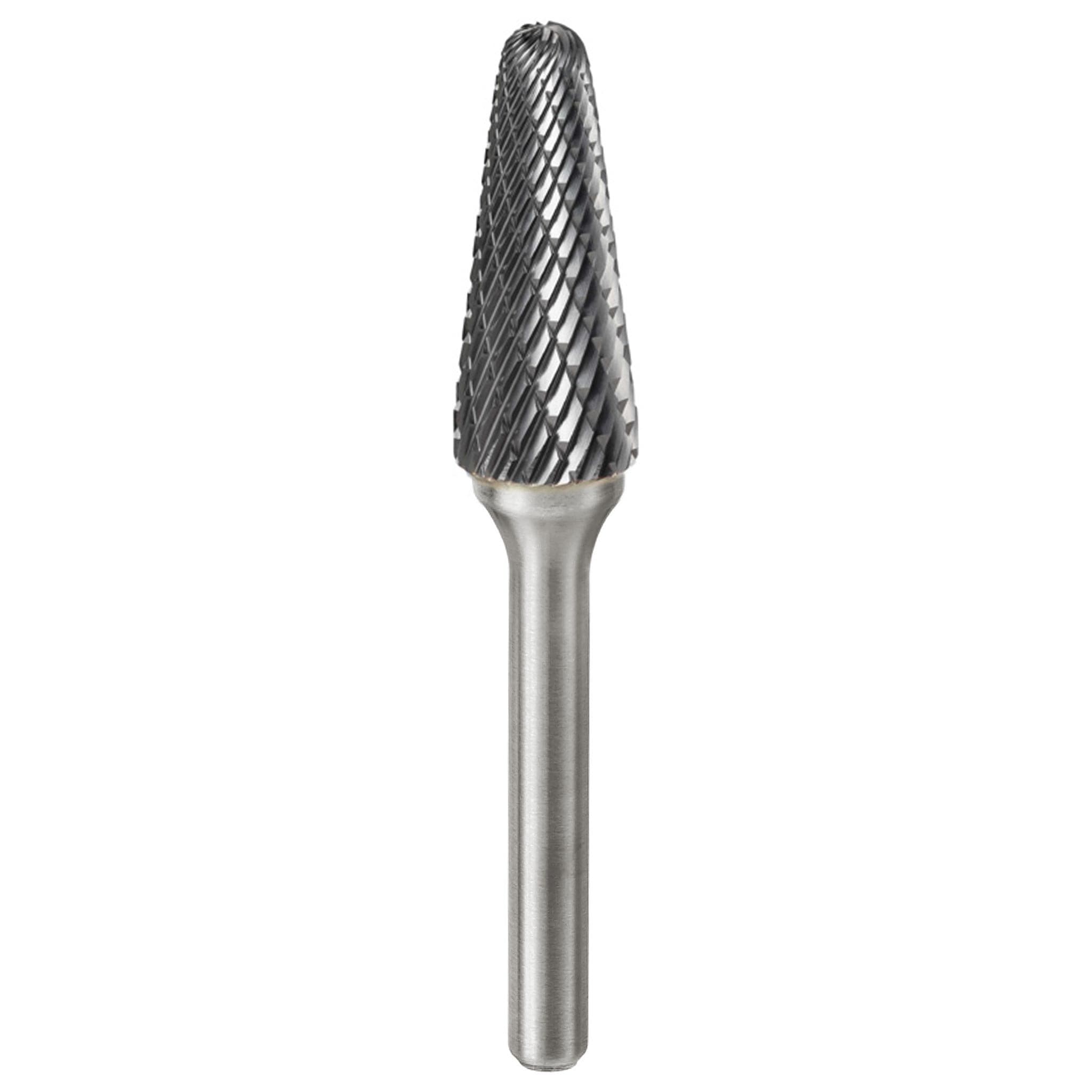- Alguma Pergunta?
- 79 3214-6040
- 79 3214-6041/6042
- contato@clinicasoniasantana.com.br
Single Cut VS Double Cut Burrs
similarities in terms of their basic structure and purpose, there are distinct differences between the two. Let's explore the characteristics, advantages, and applications of single cut and double cut burrs in detail.
Single Cut Burrs: Single cut burrs, also known as single flute burrs, have a single cutting flute spiraling around the burr's body. Here are the key features and characteristics of single cut burrs:
1. Cutting Pattern: Single cut burrs create a unidirectional cutting pattern, with a single flute that typically spirals in a right-hand direction. This pattern facilitates controlled and precise material removal.
2. Surface Finish: Single cut burrs produce a smoother surface finish compared to double cut burrs. The single cutting flute generates fewer cutting marks, resulting in a more polished appearance.
3. Material Removal: Single cut burrs are designed for lighter material removal and finishing applications. They excel at creating fine finishes, deburring edges, and achieving detailed shaping.
4. Heat Generation: Single cut burrs generate less heat during operation due to the lower number of cutting edges. This feature can be advantageous when working with heat-sensitive materials.
5. Chip Clearance: Single cut burrs have a narrower chip clearance space compared to double cut burrs. While this reduces the rate of chip evacuation, it also helps prevent clogging when working with certain materials.
6. Suitable Materials: Single cut burrs are commonly used on softer materials such as aluminum, plastics, wood, and composites. They are ideal for applications that require precision and a smoother surface finish.
Advantages of Single Cut Burrs:
a. Produces a smoother surface finish
b. Ideal for fine finishing and light material removal
c. Generates less heat during operation
d. Suitable for softer materials
e. Offers precise control and detail work
Applications of Single Cut Burrs:
a. Deburring edges and removing sharp burrs
b. Creating fine finishes on softer materials
c. Shaping and contouring intricate details
d. Carving and engraving designs
e. Woodworking, jewelry making, and artistic applications
Double Cut Burrs: Double cut burrs, also called double flute burrs , feature two cutting flutes that intersect and create a crisscross cutting pattern. Let's explore the key characteristics and applications of double cut burrs:
 OMNI RANGE BURRS-INCH
OMNI RANGE BURRS-INCH
1. Cutting Pattern: Double cut burrs produce a crisscross cutting pattern due to the intersecting flutes. This pattern results in more aggressive material removal and rapid stock removal capabilities.
2. Surface Finish: Double cut burrs leave a slightly rougher surface finish compared to single cut burrs. The crisscross cutting pattern generates more visible cutting marks, which can be advantageous for applications that do not require a polished finish.
3. Material Removal: Double cut burrs are designed for faster and more aggressive material removal. The intersecting flutes enhance cutting efficiency, making them suitable for heavy stock removal and shaping tasks.
4. Heat Generation: Due to the increased number of cutting edges, double cut burrs generate more heat during operation. This factor should be considered when working with heat-sensitive materials or when prolonged use may lead to overheating.
5. Chip Clearance: Double cut burrs have wider chip clearance spaces between the flutes, allowing for efficient chip evacuation. This feature reduces the risk of clogging and ensures smoother cutting performance.
6. Suitable Materials: Double cut burrs are versatile and can be used on a wide range of materials, including metals (both ferrous and non-ferrous), plastics, wood, and composites. They are particularly effective for heavy-duty applications and tasks that require rapid material removal.
Advantages of Double Cut Burrs:
a. Offers faster and more aggressive material removal
b. Efficient chip evacuation and reduced clogging
c. Versatile, suitable for a wide range of materials
d. Ideal for heavy stock removal and shaping tasks

Applications of Double Cut Burrs:
a. Grinding and shaping metal surfaces
b. Removing welds and excess material
c. Deburring and edge breaking
d. Sculpting and rough shaping in woodworking
e. Modifying and repairing molds and dies
In summary, the main differences between single cut and double cut burrs lie in their cutting patterns, surface finish, material removal capabilities, heat generation, chip clearance, and suitable applications. Single cut burrs excel in precision work and finer finishes, while double cut burrs offer faster material removal and are more suitable for heavy-duty applications. The choice between the two depends on the specific requirements of your project, the material being worked on, and the desired outcome.
